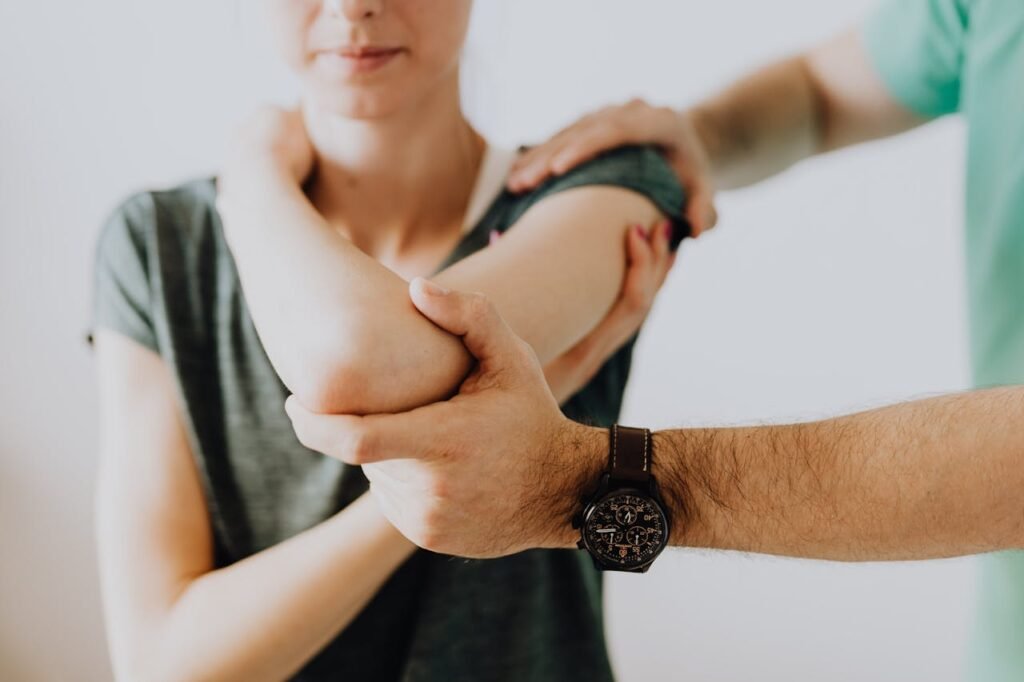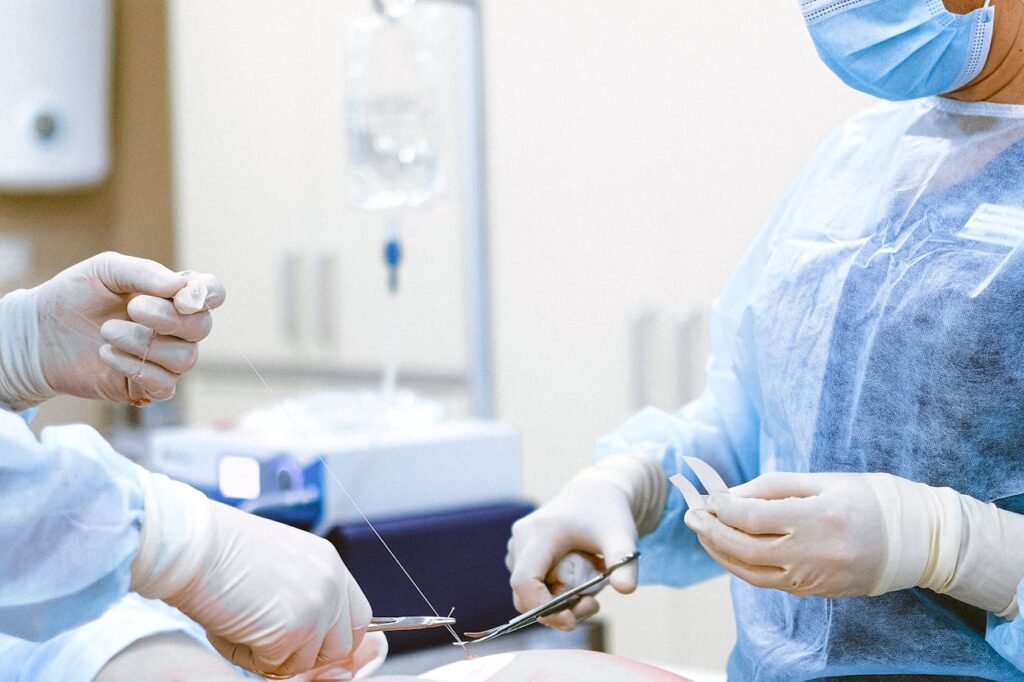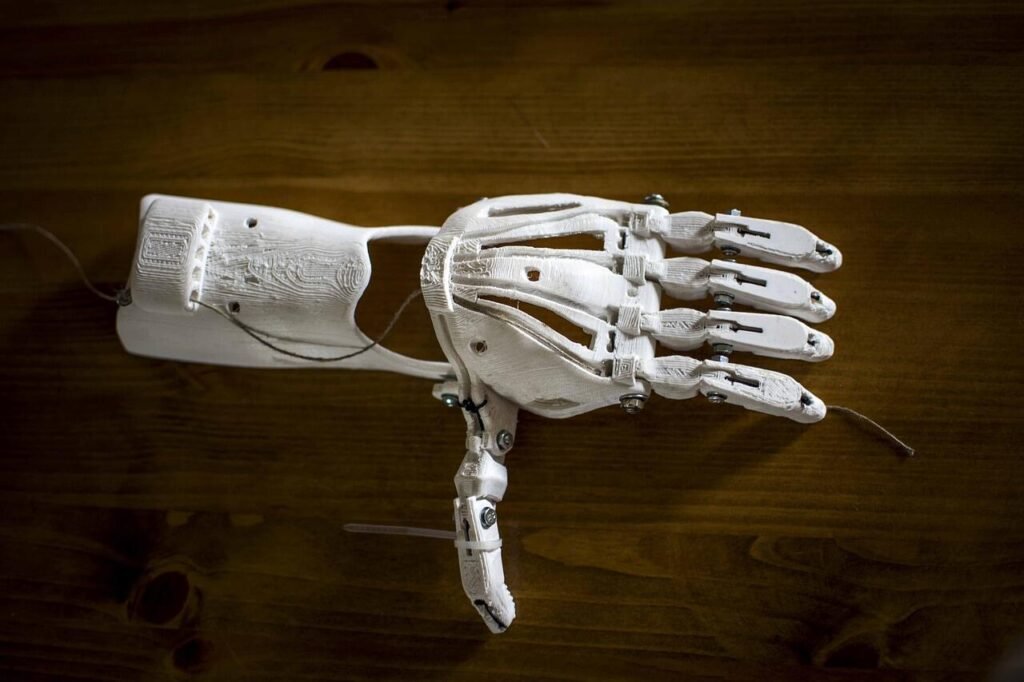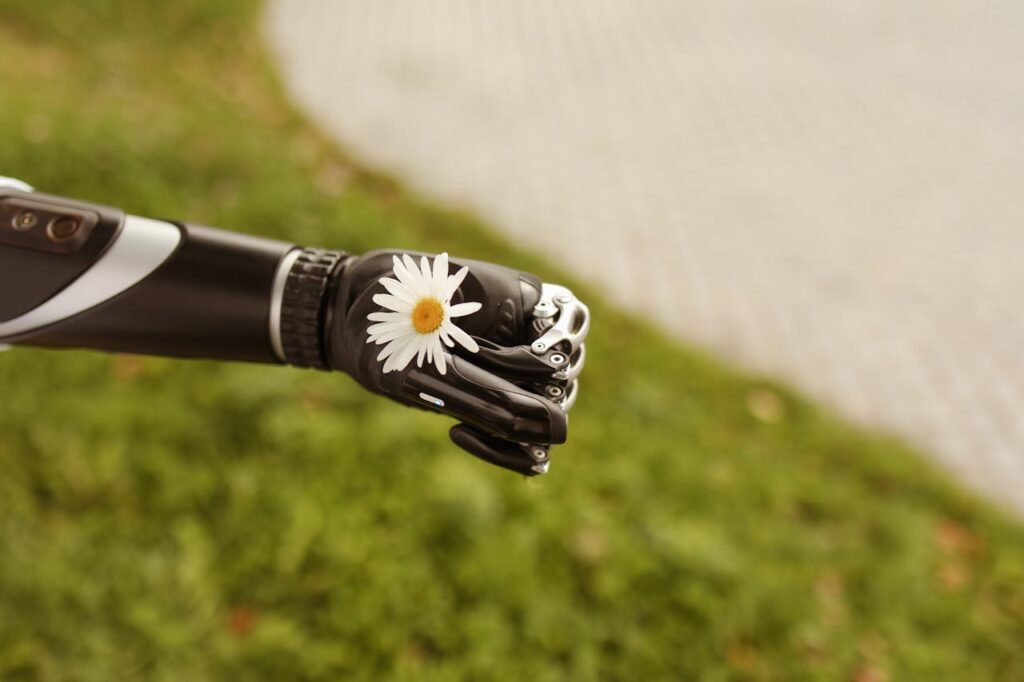Life changes suddenly after an amputation. The surgery may heal, but the road to recovery is just beginning. Muscles weaken, movement feels limited, and everyday tasks can seem far away. This stage is where rehabilitation becomes the bridge between loss and independence.
Among the many tools that support recovery, Electrical Muscle Stimulation (EMS) stands out as one of the most effective. By gently contracting the muscles through safe electrical signals, EMS helps keep the body active even when natural movement feels difficult. It keeps the muscles alive, boosts circulation, and prepares the body for future prosthetic use.
In this article, we will explore how EMS fits into post-surgery rehab for amputees. We will look at why it matters, how it works, and how it can be combined with other therapies to bring faster and more confident recovery. Most importantly, we will see how EMS helps patients not only heal but also move forward with strength and dignity.
Post-Surgery Challenges for Amputees
Physical Weakness and Muscle Loss

After surgery, the residual limb often feels weak and heavy. Muscles that once supported daily activities are suddenly inactive. Without regular use, these muscles begin to shrink and lose strength. This process, called atrophy, makes it harder to rebuild movement later on.
Pain and Sensitivity
Pain is another major challenge in the early stage of recovery. Some patients experience sharp or throbbing pain in the residual limb. Others deal with phantom sensations, where the missing part feels like it is still there. Both can interfere with sleep, limit movement, and make therapy more difficult.
Reduced Circulation
When muscles stop working as they did before, blood flow slows down. This reduced circulation can lead to swelling, delayed wound healing, and a heavy feeling in the limb. Good blood flow is essential for recovery, but it often needs extra support after surgery.
Emotional Strain and Fatigue
Beyond the body, the mind also faces challenges. The sudden loss of independence can feel overwhelming. Simple activities, from holding objects to dressing, may feel out of reach. This emotional strain often leads to fatigue, frustration, or even reluctance to start therapy.
Preparing for Prosthetic Use
Many amputees look forward to using a prosthetic, but the body must first be ready. Weak muscles, poor circulation, and limited endurance make prosthetic training harder. Without a strong foundation, the prosthetic can feel heavy, uncomfortable, and difficult to control.
Where EMS Fits in Post-Surgery Rehab
Keeping Muscles Alive
One of the biggest problems after surgery is muscle inactivity. Without use, they quickly shrink and weaken. EMS steps in by sending small electrical signals to the muscles, making them contract and relax. Even when the patient cannot move them strongly on their own, EMS ensures they remain active. This keeps the muscles alive, prevents atrophy, and preserves strength for the next stages of recovery.
Supporting Circulation and Healing
Healing depends heavily on good blood flow. When muscles contract naturally, they pump blood through the body. After amputation, this pumping action slows down. EMS recreates it through rhythmic contractions. Each pulse improves circulation, carrying oxygen and nutrients to the healing tissues. This not only speeds up recovery but also reduces swelling and lowers the risk of infection.
Managing Pain and Phantom Sensations
Pain can make recovery feel overwhelming. For many amputees, phantom limb sensations — the strange feeling that the missing part is still there — are especially troubling. EMS helps manage this by giving the brain real, physical input from the muscles that remain. Instead of sending confusing signals, the nervous system focuses on the real contractions. This reduces phantom sensations and often eases pain, making therapy more tolerable.
Building Endurance Gradually
Early rehabilitation often feels exhausting. Even small efforts can leave patients tired. EMS allows the body to train without strain. Sessions can begin with just a few minutes of light contractions. Over time, as strength grows, intensity can be increased. This gradual approach builds endurance safely, giving the patient more energy for everyday activities.
Preparing for Prosthetic Control
When the time comes to fit a prosthetic, strong and responsive muscles are essential. Myoelectric prosthetics, in particular, rely on clear muscle signals to work properly. EMS ensures that these signals stay strong and easy for sensors to detect. By keeping the muscles conditioned, EMS makes the transition to prosthetic use smoother and less frustrating. Patients who use EMS early often find that they adapt to their prosthetic faster and with greater confidence.
Supporting Emotional Recovery
Recovery is not just physical — it is also emotional. Many patients feel discouraged when they see their muscles weaken or struggle to move. EMS provides visible and tangible progress. Watching the muscles contract again, even with help from the device, creates hope. It reassures the patient that their body is still capable of growth and recovery. This emotional lift is just as important as the physical results, as it keeps motivation high.
The Step-by-Step Role of EMS in Rehabilitation
In the Early Healing Phase

Right after surgery, the focus is on wound healing and protecting the residual limb. Movement is limited, and patients often feel nervous about even touching the area. This is when muscles are most at risk of atrophy. EMS becomes a gentle first step. Short sessions with very low intensity help keep the muscles active without stressing the healing tissues. The contractions also improve circulation, which supports faster wound healing and reduces swelling.
Transitioning to Gentle Activity
As the wound heals and the patient gains confidence, light exercises are introduced. At this stage, EMS can be combined with simple movements like stretching or lifting light objects. The stimulation prepares the muscles, making them more responsive during exercise. Patients notice that tasks feel easier when EMS has already “warmed up” the muscles. This stage bridges the gap between complete rest and active therapy.
Strengthening for Daily Functions
Once the patient can move more freely, the focus shifts to building strength for everyday activities. Holding utensils, dressing, or typing all require stable, strong muscles. EMS supports this phase by training the muscles regularly and consistently. The sessions can be longer and slightly more intense, targeting both strength and endurance. This ensures the limb is ready for functional training in occupational therapy.
Preparing for Prosthetic Fitting
For many amputees, one of the most important milestones is prosthetic fitting. This stage requires residual muscles to be strong enough to generate reliable signals. EMS plays a critical role here by keeping the nerve-muscle connection sharp. When the prosthetic sensors detect these signals, the device responds smoothly. Patients who have used EMS often find their prosthetic easier to control, which boosts confidence during training.
Supporting Long-Term Use
Rehabilitation does not stop once the prosthetic is fitted. In fact, the long-term challenge is maintaining strength and avoiding imbalance. EMS continues to support patients by preserving muscle tone and endurance. Regular sessions prevent over-reliance on the non-affected side and reduce the risk of strain or fatigue. This long-term support ensures that the prosthetic remains comfortable and effective for daily life.
Helping in Setbacks and Adjustments
Recovery is rarely a straight path. Patients may face illnesses, injuries, or periods where they cannot use their prosthetic. In such cases, muscles weaken quickly again. EMS acts as a safety net, helping rebuild strength after setbacks. It allows patients to return to their routines faster without feeling like they are starting over completely.
Strategic Importance of EMS in Post-Surgery Rehabilitation
Why Businesses Should Pay Attention

For rehabilitation centers, prosthetic clinics, and health-tech providers, EMS is more than a therapy — it is a differentiator. Patients and their families often look for solutions that bring faster results and reduce long-term dependency. By offering EMS as part of a structured program, businesses not only improve outcomes but also position themselves as leaders in advanced recovery solutions.
In a competitive healthcare environment, standing out requires innovation. Traditional physiotherapy is well-known, but combining it with EMS creates a stronger value proposition. Clinics that integrate EMS into their protocols can market themselves as forward-thinking, patient-centered, and results-driven. This perception is critical for building trust, attracting new patients, and forging partnerships.
Building EMS Into Patient Pathways
For EMS to deliver its full value, it must be placed strategically within the patient’s recovery journey. Businesses should avoid treating it as a side option and instead make it a core part of rehabilitation pathways. A structured approach might look like this:
- Week 1–3: Use EMS to prevent early muscle atrophy, support circulation, and reduce pain when voluntary movement is limited.
- Week 4–6: Combine EMS with gentle exercises to rebuild control and endurance.
- Week 7 onwards: Focus EMS on strengthening residual muscles for prosthetic readiness.
By mapping EMS into each phase, clinics can show patients exactly how it will help them, step by step. This not only boosts patient confidence but also increases program adherence.
Training Staff for Better Outcomes
One of the most common mistakes businesses make is offering EMS without proper training for staff. Simply placing electrodes on the limb is not enough. Staff should understand muscle anatomy, signal placement, and progression settings to maximize benefits for each patient. Businesses that invest in staff training not only improve results but also enhance their reputation for quality care.
Training also allows therapists to explain EMS clearly to patients, which is vital for trust. When patients understand why a therapy is being used and how it helps them, they are more likely to stay engaged in the program.
Educating Patients and Families
Families play a huge role in recovery after amputation. If they understand EMS, they can help ensure patients stick to their sessions at home. Businesses can create easy-to-read guides, short videos, or live demonstrations that explain how EMS works, what to expect, and how to use it safely.
Educated families become advocates. They share positive experiences with others, increasing word-of-mouth referrals. For businesses, this is one of the most cost-effective marketing strategies — real stories of progress travel further than any advertisement.
Offering EMS as a Service Package
Instead of positioning EMS as a one-time session, businesses should package it as part of a comprehensive rehabilitation plan. This could include:
- In-clinic sessions guided by professionals during the early weeks.
- At-home EMS kits for long-term use, with regular follow-up appointments.
- Progress tracking tools so patients and families can see improvement over time.
Such packages create recurring engagement, which increases patient loyalty. They also generate additional revenue streams while delivering genuine value.
Measuring and Showcasing Results
What sets leading businesses apart is their ability to prove outcomes. EMS lends itself well to measurable progress. Clinics can track metrics like muscle tone, strength, circulation improvements, and prosthetic readiness timelines. Sharing this data with patients builds confidence.
From a business perspective, showcasing these results in marketing material, annual reports, or case studies helps attract new patients and partnerships. Hospitals, insurers, and NGOs often prefer collaborating with centers that have proven, evidence-backed methods.
Overcoming Adoption Challenges
Some businesses hesitate to adopt EMS because of perceived costs or lack of familiarity. However, the real barrier is often awareness. Patients may be skeptical of “electrical therapy” at first. This is why businesses must focus on clear communication. Instead of emphasizing the technology, they should highlight the benefits: faster recovery, less pain, and better prosthetic control.
To address cost concerns, businesses can start small. A single EMS device in a rehab center can serve multiple patients. Over time, as demand grows, more devices can be added. Scaling gradually allows businesses to test outcomes while managing investment risks.
Leveraging EMS for Competitive Advantage
Healthcare is moving toward personalization and technology-driven solutions. Clinics that adopt EMS early position themselves as innovators. This creates opportunities for partnerships with prosthetic manufacturers, government programs, and insurers who are increasingly looking for cost-effective recovery solutions.
EMS also aligns well with the trend of home-based rehabilitation. By offering portable EMS devices, businesses can extend their care beyond the clinic walls. This creates a hybrid model where patients receive professional guidance in-clinic and continue training at home. Such models are not only efficient but also highly appealing to modern patients who want flexibility.
Action Steps for Businesses to Implement EMS
- Assess Patient Needs: Start with amputees who are at high risk of muscle atrophy or phantom pain. Introduce EMS as an early intervention.
- Train the Team: Provide workshops for therapists and staff to master EMS protocols, electrode placement, and patient communication.
- Pilot the Program: Launch EMS with a small patient group and track measurable outcomes such as strength, endurance, and pain reduction.
- Collect Feedback: Ask patients about their comfort, progress, and satisfaction. Use their testimonials for trust-building.
- Scale Strategically: Expand EMS offerings with home-use devices, packages, and partnerships once demand is established.
- Promote the Benefits: Highlight EMS success stories on websites, brochures, and social media. Position the business as a leader in advanced amputee care.
Combining EMS With Other Rehabilitation Approaches
EMS and Physiotherapy
Physiotherapy is the backbone of recovery for amputees. It focuses on improving movement, restoring balance, and building overall body strength. EMS enhances these efforts by preparing the muscles before therapy sessions. When stimulation has already activated the residual limb, exercises feel easier, smoother, and less tiring. Patients are able to complete more repetitions without feeling as fatigued. Over time, EMS and physiotherapy together create stronger, more coordinated muscles that support everyday function.
EMS and Occupational Therapy
Occupational therapy focuses on helping patients return to daily living tasks such as dressing, cooking, writing, and grooming. For these skills, endurance and fine control are essential. EMS helps by keeping the residual muscles active so they are responsive during practice. For example, after an EMS session, patients may find it easier to grasp small objects or hold tools. The stimulation primes the muscles, giving patients the strength they need to practice independence with more success and less frustration.
EMS and Mirror Therapy
Mirror therapy has been widely used to reduce phantom limb sensations and retrain the brain. The patient performs movements with the intact limb while watching its reflection in a mirror, tricking the brain into believing both limbs are moving. When EMS is combined with this technique, the effect is much stronger. The brain not only sees the movement but also feels real contractions in the residual limb. This dual input makes nerve retraining more powerful, easing phantom sensations and strengthening muscle signals.
EMS With Sensory Re-education
Amputees often struggle with sensory changes such as numbness or oversensitivity. Sensory re-education helps retrain the brain to respond correctly to touch and pressure. When EMS is used during these sessions, it adds another layer of feedback. The combination of tactile input and electrical stimulation helps the brain connect sensations more effectively. Over time, this improves coordination and makes prosthetic use feel more natural.
Long-Term Role of EMS in Recovery
Sustaining Muscle Tone

The journey does not end once the prosthetic is fitted. Over time, muscles may again weaken if they are not used regularly. EMS prevents this by providing continuous activation, even when daily activity is low. Just a few sessions each week can keep the residual limb firm, strong, and ready for prosthetic use at all times.
Preventing Overuse Injuries
A common problem for amputees is over-reliance on the non-affected side. This imbalance often causes joint pain, fatigue, or injuries in the stronger limb. By keeping the residual muscles engaged, EMS helps distribute effort more evenly. This balance protects the whole body and supports long-term comfort.
Keeping Nerve Signals Clear
Myoelectric prosthetics depend on strong, reliable muscle signals. If these fade, control becomes difficult. EMS keeps the nerve-muscle connection sharp, ensuring prosthetic sensors can read commands easily. This results in smoother, more precise movements and greater confidence in daily tasks.
Reducing Phantom Pain Over Time
Phantom pain may lessen with time, but for many patients, it never fully disappears. Long-term EMS use provides ongoing feedback to the brain, which reduces false pain signals. Patients who maintain EMS in their routine often report less frequent phantom pain, allowing them to focus more on life and less on discomfort.
A Lifelong Support Tool
Needs change as people move through different stages of life. A young student may later become a working professional, or an older adult may prioritize comfort over performance. EMS adapts easily to these shifts. Intensity and frequency can be adjusted depending on the goal — whether it’s building strength, maintaining tone, or simply relaxing muscles at the end of the day. This flexibility makes it a lifelong partner in recovery.
Conclusion
Rehabilitation after limb loss is not a single step but a journey with many stages. Each stage brings unique challenges — weakness, pain, circulation problems, and emotional struggles. EMS fits into this journey as a quiet but powerful partner. It activates muscles when they cannot move on their own, improves blood flow, reduces phantom sensations, builds endurance, and prepares patients for prosthetic training.
Beyond the physical, EMS also supports the emotional side of recovery. Watching the muscles respond again gives patients a sense of control and progress. It restores confidence and hope, which are just as important as strength.
At RoboBionics, we believe that recovery should be faster, smoother, and more empowering. That is why we see EMS not just as a therapy, but as a bridge — from surgery to independence, from weakness to strength, and from uncertainty to dignity.
Post-surgery rehab is about building a future. With EMS, amputees don’t just heal — they move forward. Every contraction is a sign of life, every session is a step closer to freedom, and every day proves that recovery is not only possible but within reach.



